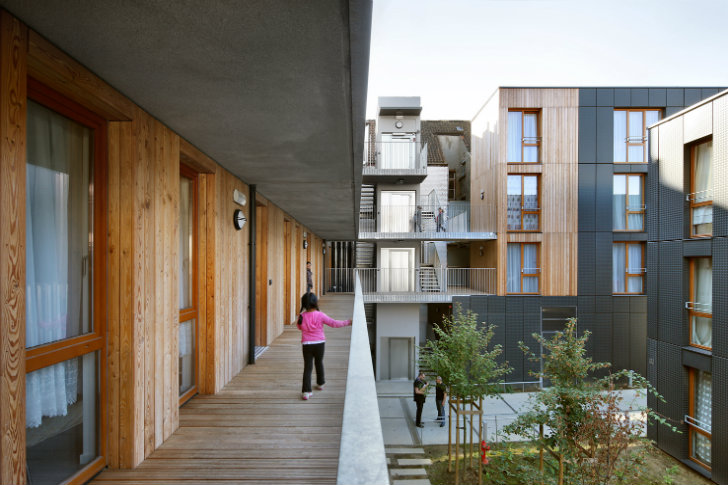Embarking on an inspirational journey, the social services department of central Brussels (CPAS) has turned a former abandoned and decontaminated soap factory into a ‘village’ of 42 sustainable social housing studios and small houses.
The goal of this project was to establish an innovative model of social housing in a highly-demanded area, only half a kilometer away from the Central Square of the EU capital, without losing the factory’s industrial heritage and the diversity of residents. This is the first blog post about existing projects on the ground that could be a source of inspiration for the development of the Affordable Housing Initiative, and more, specifically, the SHAPE-EU project that is the point of reference for a socially-inclusive Renovation Wave and New European Bauhaus.
Only two actors were involved in the implementation of the project: CPAS of Brussels and the architect MDW Architecture which proposed the winning plan through a design competition.
Keeping the industrial appeal
This 6,500m2 site required several actions before transforming into an interactive place. To keep the character of the site, the original infrastructure was kept. Also, the industrial machine and the underground ventilation system were used to guarantee good thermal comfort for the residents.
The innovation at the service of the resident purse
Adding to this technology, an impressive work was done on the insulation, the architect decided to use a material a covered exterior gallery or corridor, known as loggias. This material is interesting from an innovative perspective because it acts as an acoustic and a thermal barrier requiring little services to be run. Furthermore, it is participating in the lower of the cost of energy for residents. Other innovations were tested, such as the implementation of a collective heating system, solar panels on the roofs, or rainwater harvesting for toilets.
How does Savonnerie Heymans tick the SHAPE-EU boxes?
This work at the scale of the building is corresponding to the SHAPE-EU criteria because the consequences and the construction were done with a background thought about the district dynamic. The “village” area is not completely separate from the rest of the district. For instance, the high density is counterbalanced by the implementation of several community amenities – a public Ludothèque, a 3D landscaped park, or a playground – some available only for the residents, but some for all citizens in the area.
Adding to this district criteria, most of the work done was on renovation. Furthermore, the project is corresponding to the three pillars of the initiative. The technology and renovation methodology were innovative. The business model was done in order for the residents to have access to amenities and public transport at the heart of Brussels, empowering them to be closer to where jobs and services are. Also, the work done on the use of the green structure, innovation, and mobility scheme had a co-creation spirit
To find more information about this project, visit:
- https://www.archdaily.com/220116/savonnerie-heymans-mdw-architecture
- https://inhabitat.com/former-soap-factory-cleaned-up-into-a-sustainable-housing-project-in-brussels/
- https://www.architecturalrecord.com/gdpr-policy?url=https%3A%2F%2Fwww.architecturalrecord.com%2Farticles%2F7924-savonnerie-heymans
